Restaurants reconfigure spaces and revise menus for the yellow tier
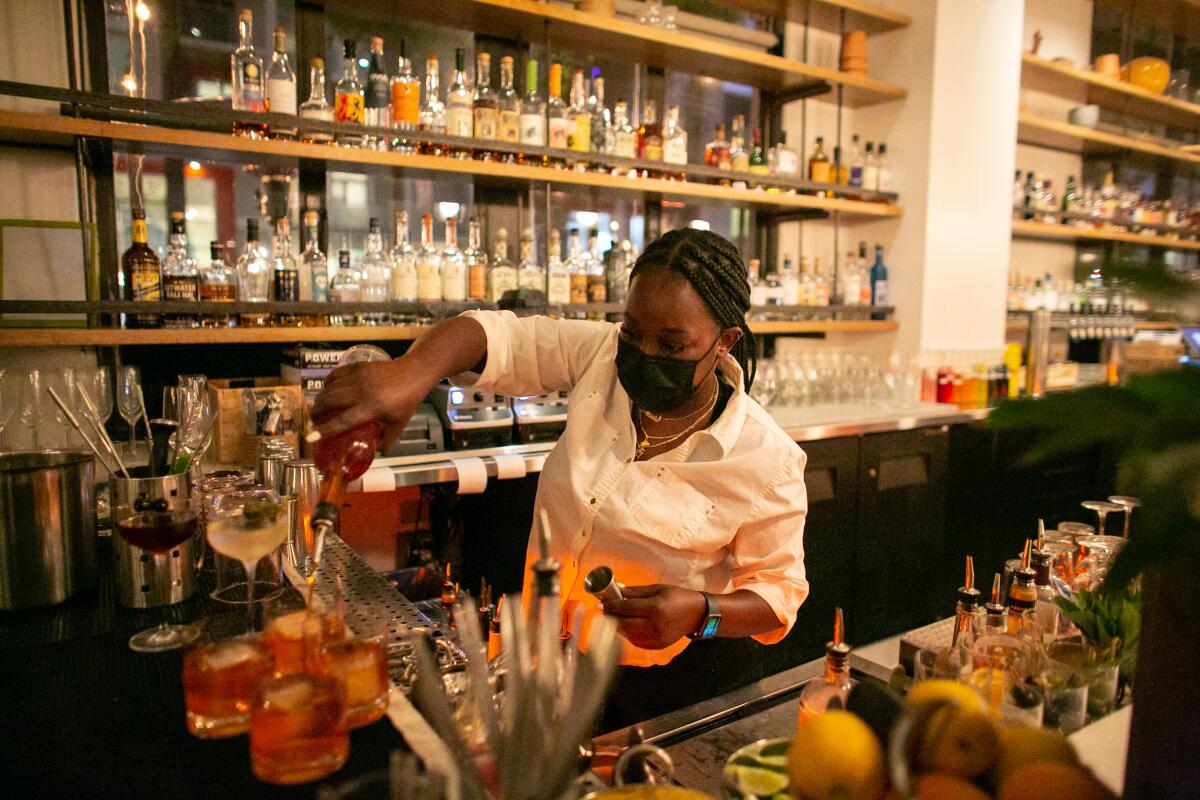
- Share via
Marianna Caldwell’s favorite seat in the house is gone, but its removal brought Cassia one step closer to reopening the dining room.
The sommelier and general manager of the Southeast Asian restaurant loved to perch at the seafood counter, where she’d observe cooks shucking oysters and readying crab claws while she people-watched and felt the hum of conversation bounce off the industrial-modern ceiling. But for nearly a year Cassia’s seats at raw bar — and every other indoor table — sat vacant as restaurants and bars reeled and pivoted throughout COVID-19. Now, at the start of the yellow tier, Cassia and other restaurants that have waited to reopen their dining rooms are unveiling renovations, improvements, new menus and even entire concept changes that their teams spent weeks or months planning.
And so, the seafood counter had to go.
On May 6, the Santa Monica restaurant welcomed guests back to its dining room for the first time since the beginning of July. The seafood station — a casual and interactive spot to sit — was a sort of counter or bar area, which is still not allowed under the yellow tier. Cassia’s team ripped out the counter, moving it into the kitchen and replacing it with sleek, upholstered banquettes. The benefits are many: The new dining section can seat roughly the same number of guests as the seafood counter and helps to visually open up the space. In addition, moving the raw bar into the kitchen streamlines service.
Cassia is a member of the Rustic Canyon Family hospitality group, whose restaurants include Rustic Canyon, Birdie G’s and Tallula’s (most of which resumed some form of indoor dining earlier this spring). Caldwell thinks that Cassia, one of the largest of the group’s restaurants, was harder to redo than many of the other properties due to its size.
“It’s felt like turning a ship,” she said. “Turning a canoe is very different than turning a ship to another direction, so this whole year has felt like, ‘OK, now we’re going to turn the ship this way,’ and instead of making swift snap decisions, we wanted to take our time and really make sure that the ship doesn’t capsize.”
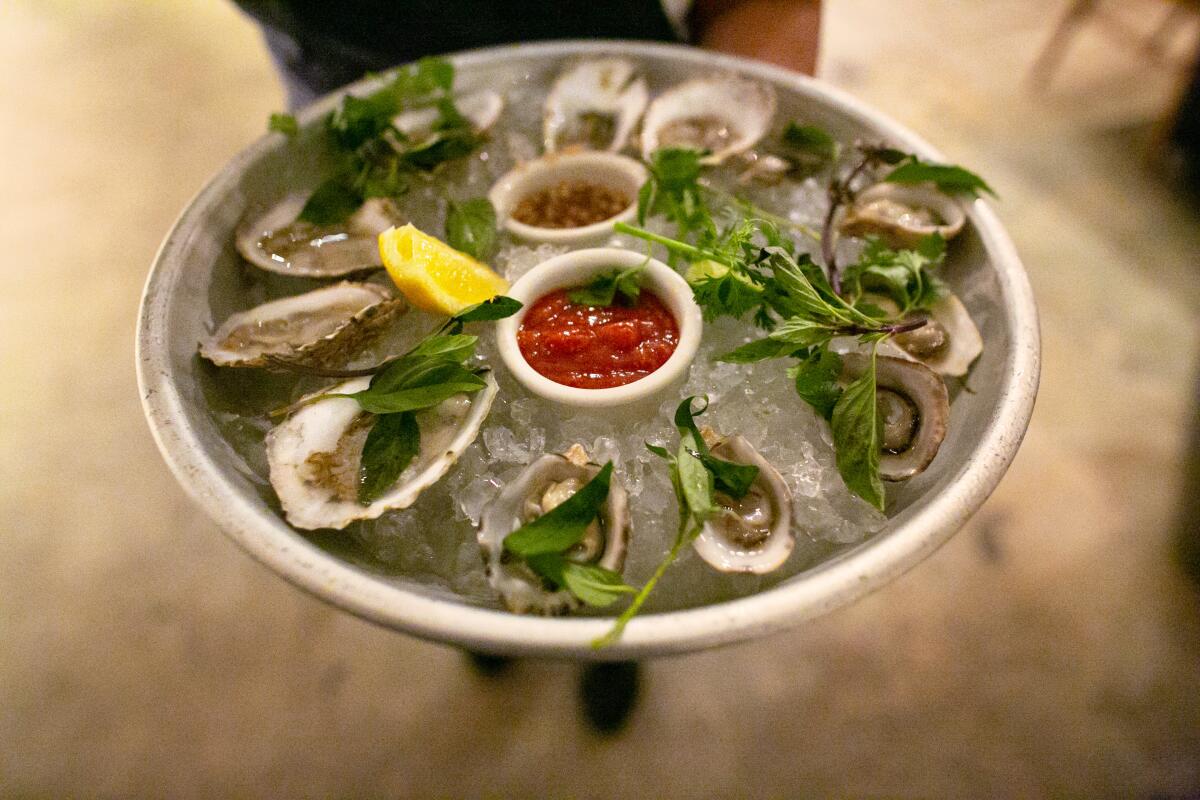
The wait allowed for more time to plan and for staff vaccinations, Caldwell says, and it was made possible by Cassia’s already-robust to-go operation — a benefit many restaurants did not have.
After the closure of on-site dining in March 2020, indoor dining returned at the end of May but was halted at the start of July. When outdoor dining could resume, the restaurant reopened the patio and turned the parking lot into an alfresco setup.
In mid-March of 2021 L.A. County moved into the red tier of California’s color-coded reopening plan, allowing restaurants to resume indoor dining for the first time since July 1, 2020, at 25% capacity. In early April, as the county moved into the orange tier, indoor dining could begin at 50%, where it remains in the yellow tier.
“It didn’t feel right when we were reopening in June, and … we shut down again a week and a half later,” Caldwell said. “I think ever since then, rather than this kind of jerky back-and-forth process and open and close and open and close, this time around — along with getting our staff vaccinated — we wanted to take our time and do it right so that we won’t have to shut back down again. And I don’t think L.A.’s going to shut back down again. I think L.A.’s in a really great place with vaccinations and case rates.”
For the Botanical Group’s restaurant E.P. in West Hollywood, the wait to reopen meant finding a silver lining in the chaos: the chance for a complete overhaul. When E.P.’s doors opened on May 10 — after a soft run of service for friends and family over the May 8-9 weekend — guests encountered a new culinary focus, a new chef, new furniture, new design and a new paint job.
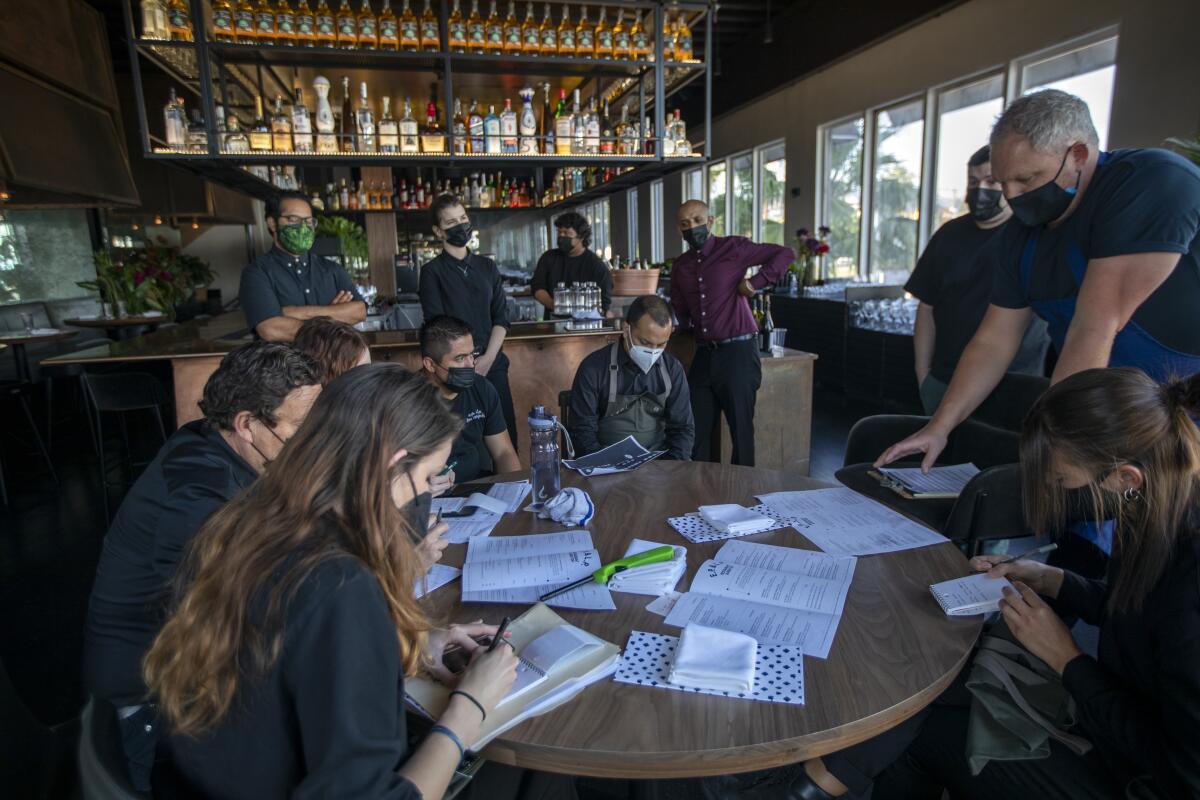
“We were thinking about, ‘If you had the time again, what would you change?’” said Grant Smillie, Botanical Group co-owner and executive director. “Often as a restaurant — and it’s a seven-day-a-week business — it’s near on impossible to shut and do these kinds of things.”
When Botanical Group closed E.P. in March 2020, later reopening only its sibling concept, rooftop bar L.P., then launching the nearby Strings of Life cafe, the hospitality firm wondered whether reopening a new version of E.P. might help the full-service restaurant stand out when the time came for indoor dining to return. The group’s culinary director, Monty Koludrovic, worked with E.P.’s then-chef, Sabel Braganza, to redefine the menu in 2020. As the pandemic wore on, Braganza left the restaurant to pursue private cheffing — a frequent occurrence for those seeking stability in the industry, over the last year especially — and Nightshade alum Nicholas Russo joined the team as E.P.’s new head chef.
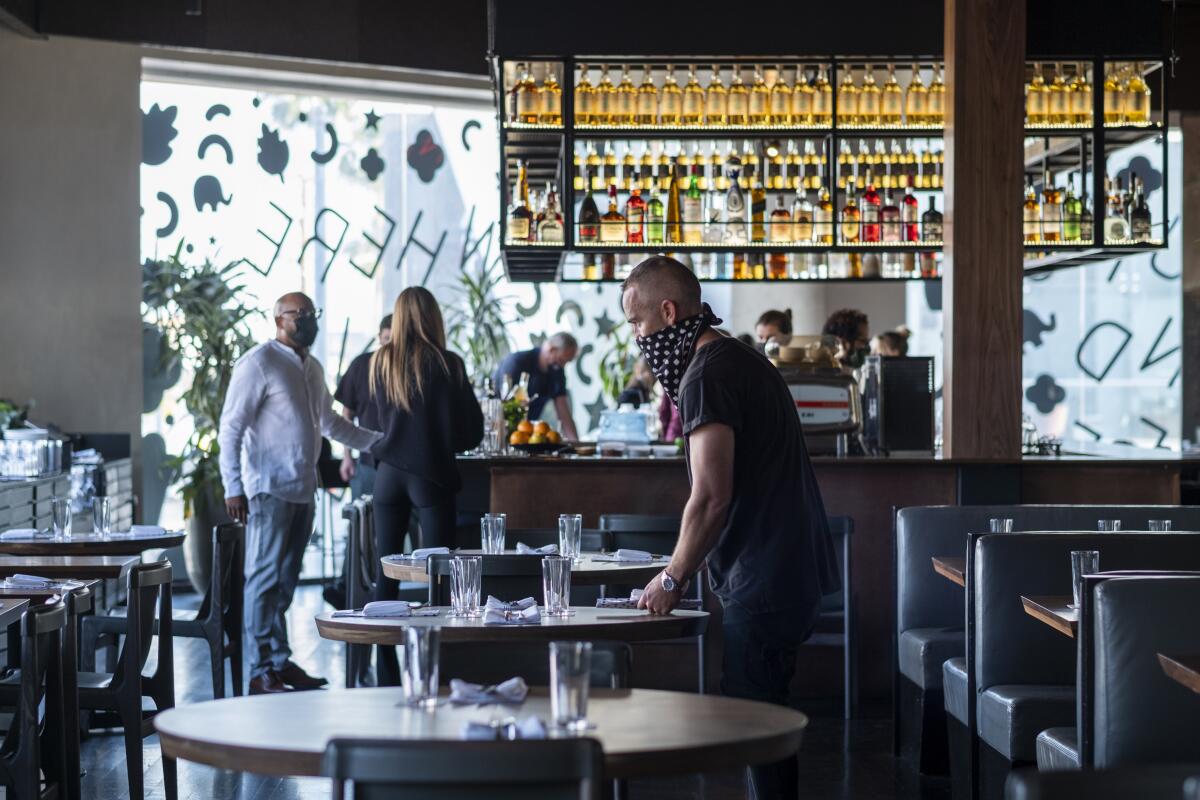
Once an eclectic Pan-Asian menu sporting the likes of abalone with curry paste; five-spice spareribs; and dan dan noodles, E.P. will re-emerge as a modern American brasserie serving anchovy toast with egg butter and chives; house-made ricotta with bottarga and watercress; and twice-cooked chicken with California-inspired jerk spice.
The ambiance has shifted from E.P.’s dark walls and moody sleekness inspired by Tokyo bars to a brighter L.A.-influenced atmosphere. Koludrovic estimates they’ve spent eight weeks on the renovation. Much like Cassia, this was partially made possible by the popularity of an outdoor offering — in this case, the upstairs bar, L.P.
“Just as a consumer in L.A., I think being forced outside was really good for lots of places,” Koludrovic said. “I love that out-in-the-street vibe; it’s like it brings the community together. But I think indoor dining is something we all love. … Thinking about it and having lived without it, I’m sort of glad we’re approaching it now when it feels safe and it feels like we can all do it and have fun about it and not be scared.”
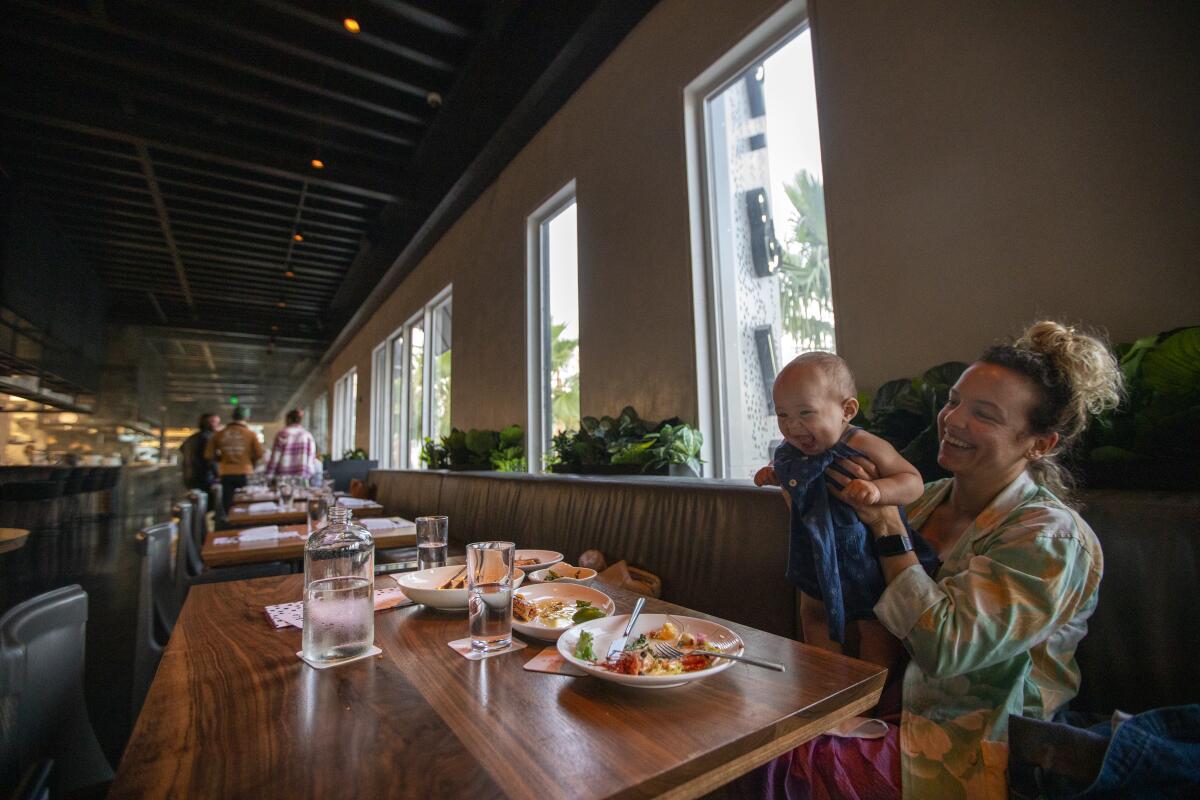
Even at the legendary Musso & Frank Grill in Hollywood, reopening May 6 meant a few changes here and there.
“For Musso’s, being 102 years old, it wasn’t necessarily about us pivoting and trying to make something work; it was more about remaining unchanged,” said proprietor Mark Echeverria, a fourth-generation member of the family that owns Musso & Frank Grill. “Doing outdoor dining is not the Musso’s experience we want people to have, so we didn’t want to focus resources and financial funds there.”
The restaurant team did try to adapt with takeout service toward the beginning of the pandemic, only to cease operations two weeks into the endeavor. Eventually they focused on what felt more familiar: those storied dining rooms. In June 2020, when they could briefly reopen indoor dining service, they added barriers between the booths. Wanting to stay true to the century-old rooms’ decor, they used wood rather than plexiglass (which is more common) and added artistic details to make the changes feel more natural to the space. (Of course, those details were barely seen by anyone. The dining rooms were reopened June 26 and closed July 1 and have remained closed until just a few days ago.)
The menu — still offering steaks and chilled seafood — now features a few new items. Echeverria said executive chef JP Amateau wanted to stay busy during his furlough and used the time to create and test new dishes that would still feel true to the restaurant’s traditional menu. (A new meatball appetizer, for instance, riffs on a popular spaghetti and meatballs dish.)
Management was also pleased about adding more tables. On May 5 county officials updated their guide to restaurant operating procedures, which included cutting the distance between tables (indoors and outdoors) from eight feet to six. Musso & Frank Grill’s booths can’t be moved — so guests will be seated at every other booth — but its freestanding tables can be spaced six feet apart, which means the restaurant can fit more tables and offer more reservations.
Within the first few hours after reservations opened, the first week was almost fully booked; by the end of the first day, the first few weeks were almost completely booked.
“We have very deep relationships with a lot of our customers,” Echeverria said. “A lot of our customers have my personal cellphone number — so a lot of text messages were flying throughout the whole year: ‘Are you guys coming back?’ ‘Are you sure you’re coming back?’ ‘When are you coming back?’
“We were getting those constantly, and I loved it because it really showed that people care for us and that they want us back,” he added. “Even though there was never a question in our minds, as family owners, whether the restaurant was going to come back or not, not everybody knew that, so I was welcoming on those questions.”
More to Read
Eat your way across L.A.
Get our weekly Tasting Notes newsletter for reviews, news and more.
You may occasionally receive promotional content from the Los Angeles Times.











